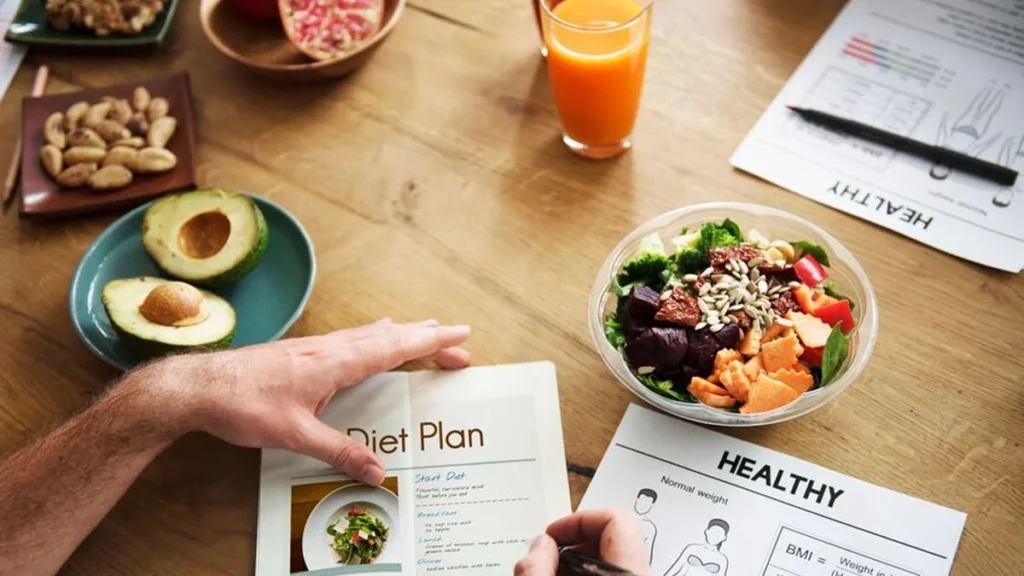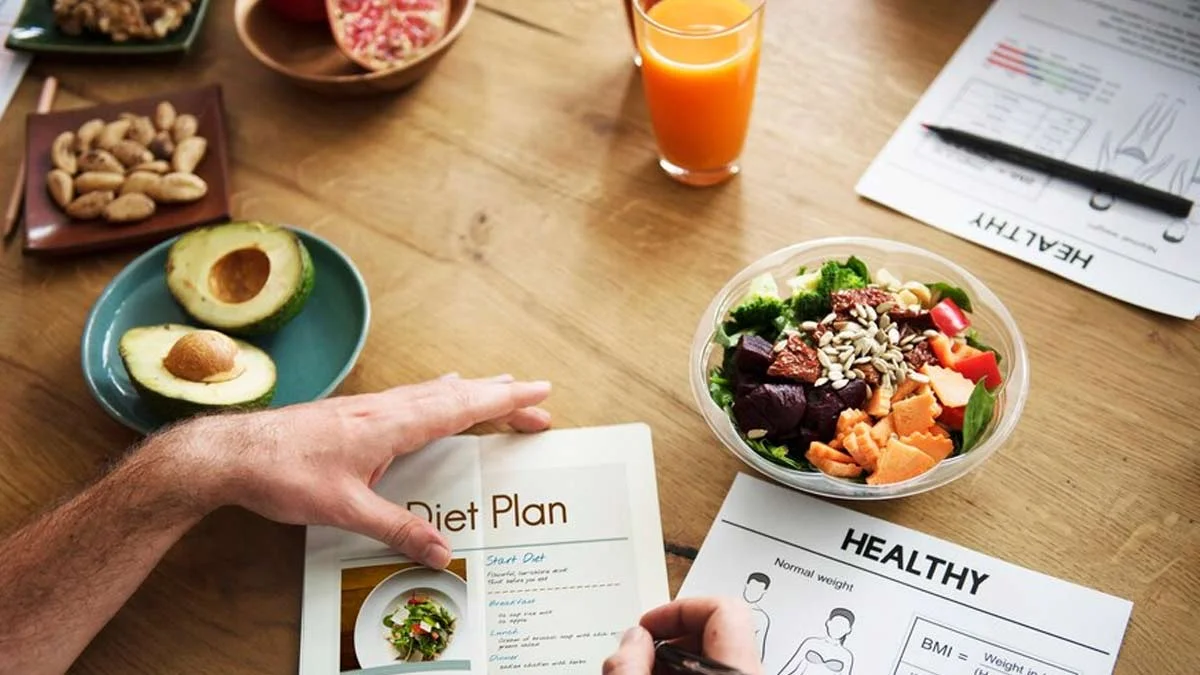Meal planning is a powerful tool that can help you maintain a balanced diet, save time, reduce stress, and avoid unhealthy food choices. By planning your meals ahead of time, you can ensure that you always have nutritious options available, making it easier to stick to your dietary goals. In this guide, we will walk you through the steps to create an effective meal plan that fits your lifestyle and nutritional needs.


Step 1: Set Your Goals
Before you start meal planning, it’s important to define your goals. These can include:
- Weight Loss: Focus on portion control and calorie-dense yet nutrient-rich foods.
- Muscle Gain: Incorporate high-protein meals and snacks to support muscle growth.
- Improved Health: Emphasize whole, unprocessed foods to enhance overall health.
- Special Diets: Cater to dietary restrictions such as gluten-free, vegan, or low-carb.
Having clear goals will guide your meal planning process and help you make choices that align with your objectives.
Step 2: Assess Your Schedule
Consider your weekly schedule, including work, school, exercise, and social commitments. Identify the days and times when you have the most time to cook and when you need quick, easy meals. This will help you determine how many meals and snacks you need to prepare in advance.
Step 3: Plan Your Meals
1. Create a Weekly Menu
Start by planning a menu for the week. Include breakfast, lunch, dinner, and snacks for each day. Variety is key to ensuring you get a wide range of nutrients and to prevent meal fatigue.
- Breakfast: Aim for balanced meals that include complex carbohydrates, protein, and healthy fats. Examples: oatmeal with nuts and berries, Greek yogurt with granola, or a veggie omelet.
- Lunch: Focus on protein and fiber to keep you full throughout the afternoon. Examples: quinoa salad with chickpeas and vegetables, turkey and avocado wrap, or lentil soup.
- Dinner: Include a protein source, vegetables, and a whole grain or starchy vegetable. Examples: grilled salmon with roasted vegetables and brown rice, chicken stir-fry with broccoli and bell peppers, or spaghetti squash with marinara sauce.
- Snacks: Choose nutrient-dense options that provide sustained energy. Examples: apple slices with almond butter, hummus with carrot sticks, or a handful of mixed nuts.
2. Use Theme Nights
To simplify planning, consider using theme nights. This approach adds variety and makes decision-making easier. Examples include:
- Meatless Monday: Plant-based meals like vegetable stir-fry or black bean tacos.
- Taco Tuesday: Tacos with different fillings such as chicken, beef, or tofu.
- Wok Wednesday: Stir-fries with various protein and vegetable combinations.
- Throwback Thursday: Family favorites or comfort foods made healthier.
- Fish Friday: Seafood dishes like baked salmon or shrimp pasta.
- Soup or Salad Saturday: Hearty soups or large, filling salads.
- Slow-Cooker Sunday: Easy slow-cooker recipes that can be prepped in the morning.
3. Balance Your Macronutrients
Ensure each meal contains a balance of macronutrients: carbohydrates, proteins, and fats. This will help keep you energized and satisfied throughout the day. For example, pair grilled chicken (protein) with quinoa (carbohydrate) and avocado (fat).
Step 4: Make a Shopping List
Once your menu is planned, create a detailed shopping list. Organize it by sections of the grocery store (produce, dairy, meat, grains, etc.) to make your shopping trip more efficient. Stick to your list to avoid impulse purchases and ensure you have everything you need for your meals.
Step 5: Prep Ahead
Meal prep can save you significant time during the week and make it easier to stick to your plan. Here are some tips for effective meal prep:
- Batch Cooking: Prepare large batches of grains, proteins, and vegetables that can be used in multiple meals. For example, cook a big pot of quinoa and a tray of roasted vegetables to use in salads, bowls, and side dishes.
- Chop Ahead: Wash and chop vegetables and fruits ahead of time so they are ready to use. Store them in airtight containers in the refrigerator.
- Portion Meals: Divide meals into individual portions and store them in containers. This makes it easy to grab a meal on busy days.
- Cook in Bulk: Prepare soups, stews, and casseroles in large quantities and freeze them in portions. This ensures you always have a healthy meal available.
Step 6: Stay Flexible
While having a meal plan is important, it’s also crucial to remain flexible. Life can be unpredictable, and sometimes plans change. Keep some backup options on hand, such as frozen vegetables, canned beans, and whole-grain pasta, to create quick and healthy meals when needed.
Step 7: Evaluate and Adjust
At the end of each week, take some time to evaluate your meal plan. Ask yourself:
- Did I enjoy the meals?
- Did the plan help me meet my nutritional goals?
- Was the prep and cooking time manageable?
- Are there any changes I need to make for next week?
Use your answers to adjust your meal plan and improve your strategy moving forward.
Conclusion
Meal planning is an effective way to ensure you eat a balanced diet, save time, and reduce stress. By setting clear goals, assessing your schedule, planning your meals, creating a shopping list, prepping ahead, staying flexible, and evaluating your plan, you can create a sustainable and enjoyable meal planning routine. This will help you stay on track with your health and wellness goals.

